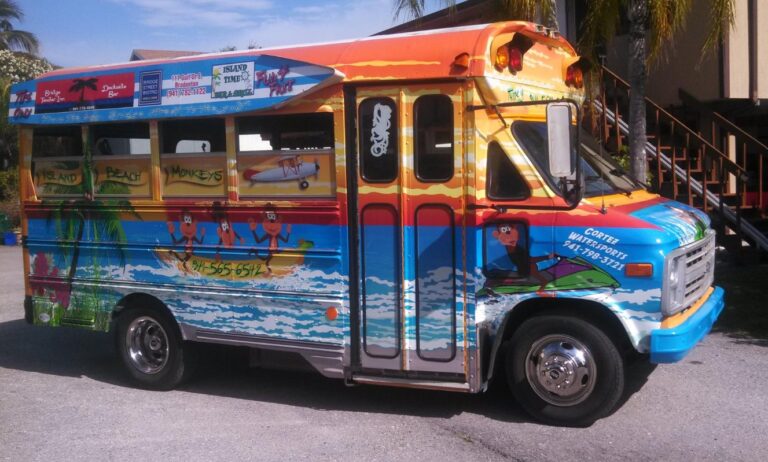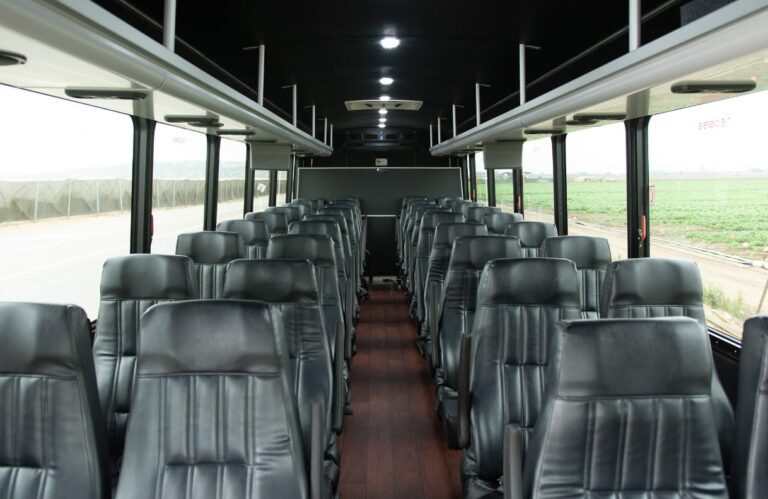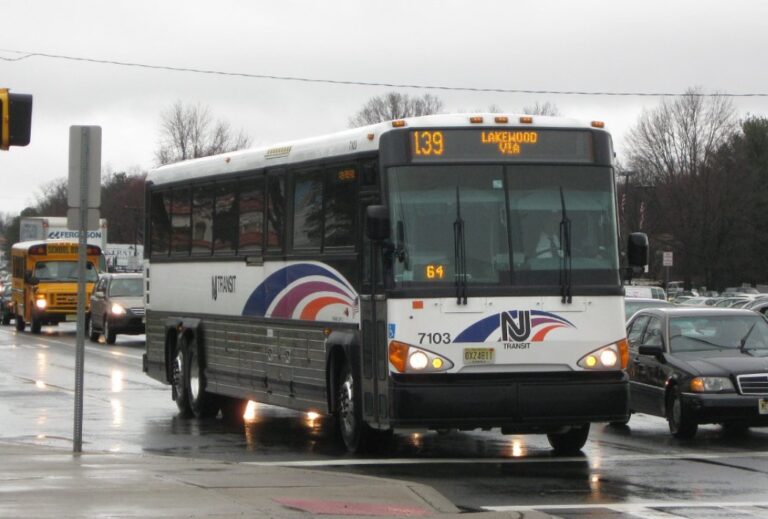How Much Does It Cost To Wrap A Bus? Answered
In today’s visually driven advertising world, wrapping a bus has emerged as a potent marketing tool. When considering How Much Does It Cost To Wrap A Bus? Various factors come into play. This comprehensive guide delves into the intricacies of bus wrapping, providing insights into the costs involved. We aim to give you a detailed understanding of the pricing spectrum, ensuring that your investment in bus wrapping is both effective and efficient.
Key Takeaways
- Bus wrapping costs vary significantly based on bus size, design complexity, and material quality.
- Average cost ranges from $3,000 to $15,000, with customization options impacting final pricing.
- Durability and maintenance of the wrap are crucial for long-term value.
- Professional services often provide the best quality but at a higher cost.
How Much Does It Cost To Wrap A Bus?
The cost of wrapping a bus can vary widely. On average, you can expect to spend between $3,000 and $15,000. This price variation depends on several key factors, including the size of the bus, the complexity of the wrap design, and the quality of the materials used.

A full wrap for a standard-sized city bus typically falls in the higher end of this range, especially if high-quality, durable materials are used.
Factors Affecting the Cost
- Size of the Bus: Larger buses require more material and labor, increasing the cost.
- Design Complexity: Custom designs with intricate patterns or multiple colors can add to the expense.
- Material Quality: Higher quality materials that last longer and look better are more expensive.
- Labor Costs: The expertise and location of the professionals involved can impact the overall cost.
Material Quality and Durability
Selecting the right materials for your bus wrap is a balancing act between cost and quality. High-quality vinyl wraps, though more expensive, offer enhanced durability and better aesthetics. They are more resistant to weather and the wear and tear of road conditions.
Advantages of High-Quality Materials
- Longevity: Better materials can last up to 5 years or more, reducing the need for frequent replacements.
- Visual Appeal: High-grade vinyl provides a more vibrant and engaging appearance.
- Maintenance: Superior materials are easier to clean and maintain, retaining their look over time.
Design and Customization
The design of the bus wrap is where creativity meets practicality. A more complex design requires more time and skill, thereby increasing the cost. Working with professional designers can ensure that the wrap is both visually stunning and cost-effective.

Elements of Design
- Graphic Complexity: The number of colors and intricacy of the design play a significant role in pricing.
- Branding Elements: Incorporating logos and branding elements can add to the design complexity.
Professional Services vs. DIY
Hiring professional services for bus wrapping ensures a high-quality outcome but at a higher cost. DIY options might be more affordable but can lack the finesse and durability of a professional job.
Comparing the Two Approaches
- Quality and Expertise: Professionals bring experience and access to better materials.
- Time and Effort: DIY approaches can be more time-consuming and labor-intensive.
Maintenance and Care
Maintaining the bus wrap is crucial for extending its life and preserving its visual impact. Regular cleaning and inspections can prevent damage and prolong the wrap’s effectiveness.
Maintenance Tips
- Regular Cleaning: Keeps the wrap looking fresh and prevents damage from dirt and debris.
- Inspections: Regular checks for tears or peels can save on repair costs.
Long-term Value and ROI
Considering the long-term value and return on investment is essential when wrapping a bus. A well-executed wrap can serve as a moving billboard, offering extensive marketing exposure.
Assessing ROI
- Advertising Reach: A bus wrap can reach a wide audience, enhancing brand visibility.
- Cost vs. Exposure: Comparing the cost of the wrap to traditional advertising methods can highlight its value.
How Do They Wrap A Bus?
Wrapping a bus involves a detailed and precise process, typically executed by professional vehicle wrap technicians. The procedure starts with the design phase, where a custom graphic is created based on the client’s specifications. Once the design is approved, it is printed onto large vinyl sheets.

Before the application, the bus is thoroughly cleaned to remove any dirt, grease, or residue. This ensures the vinyl adheres properly to the surface. The vinyl sheets are then meticulously applied to the bus. This is a delicate process, requiring skilled hands to avoid air bubbles and ensure the wrap fits perfectly, especially around curves and corners.
The vinyl is heat-applied to conform to the bus’s shape. For windows, perforated vinyl is used to maintain visibility from inside the bus. Once applied, the wrap is sealed and finished, giving the bus a completely new look. This process can take several days, depending on the bus size and wrap complexity.
How Much Does It Cost To Wrap A Double Decker Bus?
The cost of wrapping a double-decker bus is typically higher than wrapping a single-level bus due to its larger size and the additional surface area. Prices can range from approximately $10,000 to $25,000 or more.

This wide range depends on factors like the wrap’s complexity, the quality of materials used, and the geographic location where the wrapping is done.
Double-decker buses offer a more extensive area for advertising or branding, which often involves intricate designs and high-quality materials to make the most of this larger canvas. Given their prominent size and visibility, these buses are often used in high-impact marketing campaigns, which can also influence the cost.
What Are The Benefits Of Bus Wraps?
Bus wraps offer several benefits, especially in terms of marketing and branding:
- High Visibility: Buses travel across cities and towns, providing high exposure to a diverse audience. A well-designed wrap can turn a bus into a moving billboard, capturing attention wherever it goes.
- Cost-Effectiveness: Compared to traditional advertising mediums like billboards or TV ads, bus wraps can be more affordable and offer longer-lasting exposure.
- Customizable: Bus wraps can be tailored to fit any marketing campaign or branding strategy. They are also changeable, allowing for advertising flexibility.
- Protects the Vehicle: The wrap protects the bus’s original paint from scratches, sun damage, and minor abrasions, potentially extending the vehicle’s life.
- Eco-Friendly Option: With advancements in materials, more eco-friendly and less toxic options are available, making bus wraps a more sustainable advertising option.
- Wide Audience Reach: Buses travel through different routes, reaching a wider and more varied audience than stationary advertisements, thus broadening the reach of the advertised message or brand.
Conclusion
Wrapping a bus is an investment that requires careful consideration of various factors. From understanding the cost of wrapping a bus to assessing long-term value, this guide aims to provide a comprehensive overview.
With the right approach, bus wrapping can be an effective marketing tool, offering a blend of visibility, durability, and creativity. Remember, the investment in a quality bus wrap not only reflects your brand’s image but also contributes significantly to your marketing efforts.
People Also Ask
Are there legal considerations for bus wrapping?
Yes, there are legal considerations to keep in mind, like adhering to regulations related to advertising, traffic safety, and visibility, especially for window areas. It’s crucial to consult with local authorities or legal experts to ensure compliance.
How do weather conditions affect bus wraps?
Extreme weather conditions, like intense sunlight, heavy rain, and snow, can affect the longevity of a bus wrap. High-quality materials and proper maintenance can mitigate these effects to some extent.
Can bus wraps be repaired if they are damaged?
Yes, bus wraps can be repaired if they are damaged. Smaller areas of damage can be fixed without having to replace the entire wrap, making it a cost-effective solution.
How does bus wrapping compare to painting in terms of cost?
Wrapping a bus is generally more cost-effective than painting. It’s not only cheaper but also offers the flexibility of changing designs without the need for repainting.

Welcome to the exhilarating world of Matt Rex, a professional car racer turned renowned vehicle enthusiast. Immerse yourself in his captivating blog as he shares heart-pounding adventures, expert reviews, and valuable insights on cars, trucks, jets, and more. Fuel your passion for speed and discover the beauty of vehicles through Matt’s engaging stories and meticulous expertise. Join the ever-growing community of enthusiasts who find inspiration and expert advice in Matt Rex’s blog—a digital hub where the thrill of speed meets the pursuit of knowledge.







